News Archives : 2014

|
NSE alum Yang brings solar-powered electricity to rural TanzaniaOver the years, EGG Energy, co-founded by MIT and Harvard University engineering and business students, has garnered public praise as the “Netflix of electricity” for rural Tanzania. ...more |
 |
NSE alums Leslie Dewan and Ashley Finan testify in congress on future of nuclear energyThe Committee on Science, Space, and Technology’s Subcommittee on Energy held a hearing to examine the future of civilian nuclear energy in the US, including the potential path forward to greater utilization of nuclear energy within the country’s energy portfolio. |

|
NSE’s Mareena Robinson-Snowden moderates Black Lives Matter event at MITMIT community engages in dialogue on race &mdash President Reif: Winterfest protestors “are asking us to listen, to collaborate, and to act.” ...more |
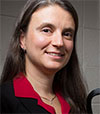
|
NSE’s Yildiz participates in MIT’s Materials Day SymposiumMaterials Day Symposium highlights breakthroughs in simulation methods, manufacturing techniques, and improved alloys. ...more |
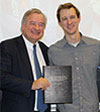
|
Del Favero Lecture: The future of fusion powerThe next two years in MIT’s Nuclear Science and Engineering Department may see fusion research embark on a landmark period of innovation. In his address to the NSE community in the inaugural Del Favero Doctoral Thesis Prize Lecture, Dr. Zach Hartwig not only described his group’s research achievements but also explained why ...more |
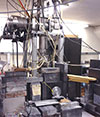
|
LNSP receives $3.2M for nuclear warhead verificationNSE’s Laboratory for Nuclear Security and Policy (LNSP) has received $3.2 million from the National Nuclear Security Administration to support research that could revolutionize the verification of international arms-control treaties. ...more |

|
The Iran nuclear deadlineOn November 19, 2014, the MIT chapter of Global Zero and Radius hosted a roundtable discussion on the status of negotiations between Iran and the E3+3 (The United States, Russia, China, United Kingdom, France, and Germany) about Iran’s nuclear program. The discussion covered the history of the diplomatic process, the forces influencing current negotiations, and likelihood and implications of a successful agreement. ...more |
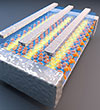
|
New 2-D quantum materials for nanoelectronicsNSE team provides theoretical roadmap to making 2–D electronics with novel properties.Researchers at MIT say they have carried out a theoretical analysis showing that a family of two-dimensional materials exhibits exotic quantum properties that may enable a new type of nanoscale electronics. ... more |
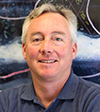
|
NSE’s Dennis Whyte named Director of the Plasma Science & Fusion CenterNSE’s Professor Dennis Whyte will serve as the next Director of the Plasma Science and Fusion Center (PSFC), effective January 1, 2015. He succeeds Professor Miklos Porkolab who, after nearly 20 years in the position, has decided to step down and return to teaching and research. ...more |

|
NSE hosts the Honorable Rose Gottemoeller for roundtable with students and facultyThe Nuclear Science & Engineering department welcomed The Honorable Rose Gottemoeller, Under Secretary of State for Arms Control and International Security, for a roundtable lunch discussion with students and faculty last Friday. The discussion focused on the application of new technologies in arms control, and the role that NSE can play. ...more |

|
NSE graduate student Derek Gaston and team win 2014 R&D 100 Award for MOOSEModeling and simulation is standard practice in nearly every scientific field. Idaho National Laboratory’s Multiphysics Object Oriented Simulation Environment (MOOSE) has transformed approaches to predictive simulation, making it quick, adaptable and more accessible. MOOSE is a computer software that can be loaded onto most UNIX-compliant operating systems including, but not limited to, Mac OS X, Ubuntu, OpenSuSE, Fedora, CentOS and Redhat. It is routinely deployed onto high-performance clusters globally, but also runs without any modifications on standard laptop computers. ...more |
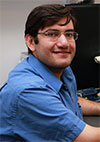
|
NSE lab seeks ways to prevent hydrogen from cracking metalsMetal alloys such as steel and zirconium that are used in pipes for nuclear reactors and oil fields naturally acquire a protective oxide or sulfide layer. But hydrogen penetration can lead to their breakdown and speed up corrosion. Understanding how defects in the protective layer allow hydrogen to penetrate could lead to designing stronger, more corrosion resistant alloys. ... more |
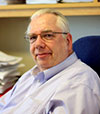
|
NSE’s Forsberg awarded Seaborg Medal by American Nuclear SocietyNSE’s Dr. Charles W. Forsberg has been awarded the prestigious Seaborg Medal by the American Nuclear Society (ANS). Dr. Forsberg is honored for his work advancing innovative nuclear fuel cycle concepts, high temperature reactors and applications for sustainable hybrid energy systems. ...more |

|
NSE’s Li finds that solid nanoparticles can deform like a liquidA surprising phenomenon has been found in metal nanoparticles: They appear, from the outside, to be liquid droplets, wobbling and readily changing shape, while their interiors retain a perfectly stable crystal configuration.The research team behind the finding, led by MIT professor Ju Li, says the work could have important implications for the design of components in nanotechnology, such as metal contacts for molecular electronic circuits.
|
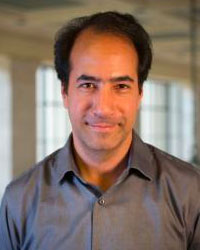
|
Alan Jasanoff: among fifteen MIT scientists to receive NIH BRAIN Initiative grantsThe National Institutes of Health (NIH) announced their first round of BRAIN Initiative award recipients. Six teams and 15 researchers from the Massachusetts Institute of Technology were recipients. ... more |
|
|
Three MIT-led research teams win 2014 Department of Energy NEUP awardsA group of universities led by Dr. Charles Forsberg of the Department of Nuclear Science and Engineering (NSE) has been awarded $5 million as part of the Department of Energy’s Nuclear Energy University Programs (NEUP) initiative to support research and development on the next generation of nuclear technologies. In separate awards, NSE Professors Benoit Forget and Kord Smith received a $400,000 grant, and DMSE Professor Alexander Slocum received a $400,000 grant. ...more |
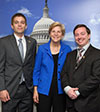
|
NSE students meet with nuclear energy policy-makersThe 2014 Nuclear Engineering Student Delegation (NESD) convened on July 6th to prepare an independent policy statement in advance of a week of meetings with nuclear industry representatives, executive offices, and legislative offices. Graduate students Daniel Curtis and Jake Jurewicz from NSE, and Matthew Ellis from Lincoln Lab represented MIT in this year's 17-member delegation. ...more |
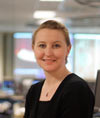
|
NSE’s White to receive Excellence in Fusion Engineering AwardThe Fusion Power Associates (FPA) Board of Directors has recognized two members of the MIT Plasma Science and Fusion Center (PSFC) for their contributions to the fusion research community. PSFC Associate Director Martin Greenwald will receive the FPA Leadership Award, and NSE professor Anne White will receive the Excellence in Fusion Engineering Award, at the FPA 35th Annual Meeting and Symposium, to be held in December, 2014. ...more |
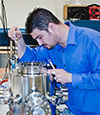 
|
American Physical Society honors NSE graduate and professor
The American Physical Society has recognized two members of the MIT Plasma Science and Fusion Center (PSFC) and Nuclear Science and Engineering (NSE) communities with awards for excellence. Mario Manuel SM ’08 in Aero Astro, PhD ’13 in NSE, will receive the 2014 Marshall N. Rosenbluth Outstanding Doctoral Thesis Award and Anne White, the Norman C. Rasmussen Career Development Professor in Nuclear Engineering, will receive the 2014 Katherine E. Weimer Award. ...more |
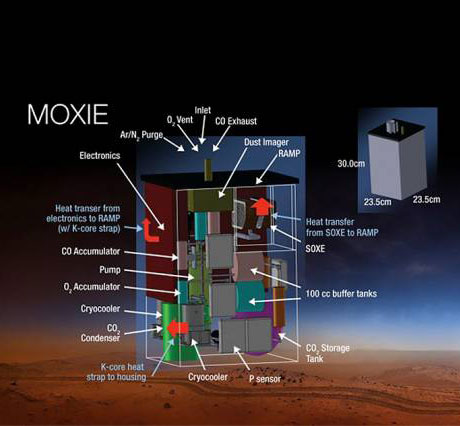 
|
NSE’s Yildiz playing key role in Mars 2020 missionWhenever the first NASA astronauts arrive on Mars, they will likely have MIT to thank for the oxygen they breathe — and for the oxygen needed to burn rocket fuel that will launch them back home to Earth. ...more |
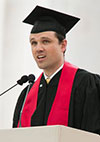
|
NSE’s Caleb Waugh addresses graduating class of 2014 at MIT’s 148thMIT’s 148th Commencement ceremony took place on Friday, June 6th under a cloudless blue sky, as a total of 990 undergraduate and 1,717 graduate students received their degrees before a gathering of some 11,000 guests in Killian Court. ...more |
 
|
NSE’s Hutchinson and White recognized for excellence in teachingThe MIT School of Engineering recently honored outstanding faculty, and graduate and undergraduate students, with the following awards: Anne White, the Norman C. Rasmussen Career Development Professor in Nuclear Engineering received the Junior Bose Award — for outstanding contributions to education from among the junior faculty of the School of Engineering. Ian Hutchinson received the Ruth and Joel Spira Awards for Excellence in Teaching — to acknowledge “the tradition of high quality engineering education at MIT.” ...more |
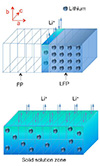
|
Seeing how a lithium-ion battery worksNew observations by researchers at MIT have revealed the inner workings of a type of electrode widely used in lithium-ion batteries. The new findings explain the unexpectedly high power and long cycle life of such batteries, the researchers say. ...more |
 
|
Nuclear music: NSE students make music from nuclear radiationJunior Keldin Sergheyev candidly admits he didn’t know much about Western musical notation before taking 21M.065 (Introduction to Musical Composition) this spring. Most of what he did know about sound, Sergheyev adds, came from 8.03 (Vibrations and Waves), a required physics class for all nuclear science and engineering majors at MIT. ...more |

|
Scott Kemp on rethinking nuclear security effortsWhat is the best way to prevent countries from acquiring nuclear weapons? The vast majority of nonproliferation efforts attempt to control access to sensitive technologies. However, a new study by Scott Kemp, an assistant professor in MIT’s Department of Nuclear Science and Engineering, suggests that this approach might not be working. In an article published tomorrow in the journal International Security, Kemp examines the history of the most common proliferation technology — the gas centrifuge, used to extract a weapon-suitable isotope of uranium from a larger supply of that element — and finds that existing nonproliferation policies would not have stopped historical instances of its development. ...more |
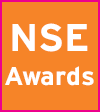
|
2014 NSE AwardsThe Department of Nuclear Science and Engineering and the student chapter of the American Nuclear Society hosted the annual awards dinner on on May 14, 2014. Meet the award winners. ...more |

|
Professor Sow-Hsin Chen receives Dottore di Ricerca “Honoris Causa” in Fisica (Honorary Doctorate in Physics) from University of Messina, ItalyNSE’s Professor Emeritus Sow-Hsin Chen was awarded the title of Dottore di Ricerca “Honoris Causa” Fisica from the University of Messina in a special ceremony on May 9, 2014 by the University President, Prof. Pietro Navarra, as approved by the University Senate. ...more |
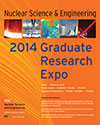
|
2014 NSE Graduate Research ExpoOn March 14, the Department of Nuclear Science and Engineering hosted its annual Graduate Research Expo. The event featured research posters presented by current doctoral and masters students as well as signature oral presentations given by an outstanding student chosen from each of the three main areas of research within the department. ...more |
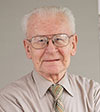
|
Unlimited Energy Meets an Unlimited Resource: Michael J. Driscoll and Nuclear Engineering at MITOn April 28th and 29th, MIT NSE and CANES held a symposium to honor Professor Michael Driscoll, who is celebrating his 80th birthday this year. Over 90 colleagues and students, past and present, were in attendance. ...more |
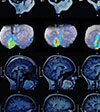
|
Alan Jasanoff: Delving deep into the brainLaunched in 2013, the national BRAIN Initiative aims to revolutionize our understanding of cognition by mapping the activity of every neuron in the human brain, revealing how brain circuits interact to create memories, learn new skills, and interpret the world around us. ... more |

|
NSE grad students William Boyd and Sam Shaner take nuclear engineering to high schoolsNSE graduate students Will Boyd and Sam Shaner, the Yellow Cake Boys, recently visited the Pioneer Charter School of Science in Massachusetts to speak with students about nuclear science and engineering. ...more |
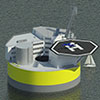 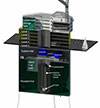
|
NSE team’s floating nuclear plants could ride out tsunamisWhen an earthquake and tsunami struck the Fukushima Daiichi nuclear plant complex in 2011, neither the quake nor the inundation caused the ensuing contamination. Rather, it was the aftereffects — specifically, the lack of cooling for the reactor cores, due to a shutdown of all power at the station — that caused most of the harm. A new design for nuclear plants built on floating platforms, modeled after those used for offshore oil drilling, could help avoid such consequences in the future. Such floating plants would be designed to be automatically cooled by the surrounding seawater in a worst-case scenario, which would indefinitely prevent any melting of fuel rods, or escape of radioactive material. ... more |
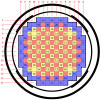
|
Three MIT freshmen win Best Undergraduate Paper award at 2014 ANS Student ConferenceThree MIT freshmen, Stephanie Pavlick, Jasmeet Arora, and Davis Tran, have won the Best Undergraduate Paper Award at the 2014 American Nuclear Society Student Conference. Their paper was selected from the 57 undergraduate papers presented at the conference. ...more |
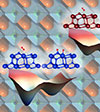
|
Strain can alter materials’ propertiesIn the ongoing search for new materials for fuel cells, batteries, photovoltaics, separation membranes, and electronic devices, one newer approach involves applying and managing stresses within known materials to give them dramatically different properties. ... more |
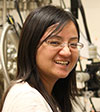
|
NSE’s Yan Chen wins two prestigious awardsNSE graduate student Yan Chen has been selected to receive a Schlumberger Foundation Faculty for the Future fellowship and the Chinese Government Award for Outstanding Self-Financed Students Abroad. ...more |
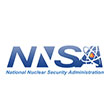
|
NNSA Awards $25M Grant to Consortium including NSE to Improve Nuclear Arms Control Verification TechnologyThe National Nuclear Security Administration’s (NNSA) Office of Defense Nuclear Nonproliferation Research and Development today announced the award of a $25 million grant a consortium that includes NSE for research and development (R&D) in nuclear arms control verification technologies, including nuclear safeguards effectiveness. The sizeable, long-term investment will support the consortium at $5 million per year for five years. |
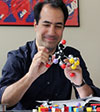
|
Alan Jasanoff: Using MRI to reveal genetic activityDoctors commonly use magnetic resonance imaging (MRI) to diagnose tumors, damage from stroke, and many other medical conditions. Neuroscientists also rely on it as a research tool for identifying parts of the brain that carry out different cognitive functions. ... more |
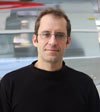
|
NSE’s Buongiorno named one of five 2014 MacVicar Faculty FellowsEvery year, the MacVicar Faculty Fellows Program recognizes a handful of professors who are exceptional undergraduate teachers, educational innovators, and mentors. The awardees this year are Jacopo Buongiorno, an associate professor of nuclear science and engineering; Tomás Lozano-Pérez, the School of Engineering Professor of Teaching Excellence in the Department of Electrical Engineering and Computer Science; John Ochsendorf, Class of 1942 Professor of Architecture, with a joint appointment in the Department of Civil and Environmental Engineering; Heather Anne Paxson, an associate professor of anthropology; and Kristala L. J. Prather, the Theodore T. Miller Associate Professor of Chemical Engineering. ... more |
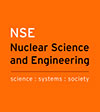
|
NSE ranked #1 in the country by U.S. News and World ReportMIT’s graduate program in engineering has been ranked No. 1 in the country in U.S. News & World Report’s annual rankings — a spot the Institute has held since 1990, when the magazine first ranked graduate programs in engineering. U.S. News awarded MIT a score of 100 among graduate programs in engineering, followed by No. 2 Stanford University (93), No. 3 University of California at Berkeley (87), and No. 4 California Institute of Technology (80). As was the case last year, MIT’s graduate programs led U.S. News lists in seven engineering disciplines. Top-ranked at MIT this year are programs in aerospace engineering; chemical engineering; materials engineering; computer engineering; electrical engineering (tied with Stanford and Berkeley); mechanical engineering (tied with Stanford); and nuclear engineering (tied with the University of Michigan). MIT’s graduate program in biomedical engineering was also a top-five finisher, tying for third with the University of California at San Diego. ... more |

|
MIT Energy Conference panel discusses prospects for integrating nuclear and intermittent renewablesThree NSE graduate students (Ruaridh Macdonald, Uuganbayar Otgonbaatar, and Aditi Verma) organized a panel at the 2014 MIT Energy Conference entitled “A Nuclear-Renewables Partnership: The Prospects for Integrating Nuclear and Intermittent Renewables” A commitment to clean energy has led federal and state governments to embrace policies for promoting renewable energy sources via tax credits, portfolio standards and feed-in tariffs. But are these instruments actually achieving cleaner air and energy security? Can nuclear and renewable power sources operate well together? How can a longer-term vision of a low carbon grid be realized? ... more |
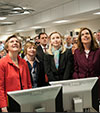
|
Warren, Clark join in restarting of Alcator C-Mod tokamakSen. Elizabeth Warren (D-Mass.) and Rep. Katherine Clark (D-Mass.) visited MIT’s Plasma Science and Fusion Center (PSFC) yesterday for the official restart of the Alcator C-Mod tokamak. The resumption of work by nearly 100 staff, faculty, and graduate students on the project follows recent congressional budget action, which reversed an earlier proposal by the Department of Energy (DOE) to shut down the C-Mod program. ...more |

|
NSE’s Professor Anne White wins Junior Bose Teaching AwardProfessor Anne White of the Department of Nuclear Science and Engineering (NSE) has been awarded the 2014 Junior Bose Award for Excellence in Teaching. This award is given annually to an outstanding contributor to education from among the junior faculty of the School of Engineering. ...more |
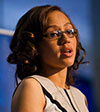 
|
NSE grad student Mareena Robinson and NSE senior Margo Batie speak at MIT’s 40th annual MLK BreakfastAs the MIT community gathered for the 40th annual breakfast celebration of the life and legacy of Martin Luther King Jr., speakers reflected on how much the nation has progressed toward his dream of inclusiveness over those decades — as well as on the need to keep working toward that vision, despite the fact that signs of racism in society have become less obvious. ...more |
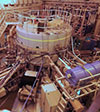
|
NSE’s fusion research energized by $22.2 million budget dealStudents, staff, and researchers at MIT’s Plasma Science and Fusion Center (PSFC) learned this week that the 2014 U.S. budget, passed by Congress and signed into law last week by President Barack Obama, includes the first funding in more than a year for the research operations of MIT’s national fusion project, Alcator C-Mod. ...more |
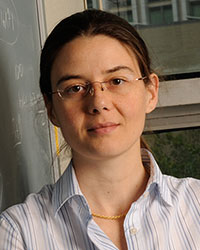
|
NSE’s Cappellaro and team develop new method to control nanoscale diamond sensorsDiamonds may be a girl’s best friend, but they could also one day help us understand how the brain processes information, thanks to a new sensing technique developed at MIT. A team in MIT’s Quantum Engineering Group has developed a new method to control nanoscale diamond sensors, which are capable of measuring even very weak magnetic fields. The researchers present their work this week in the journal Nature Communications. ...more |
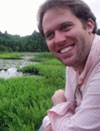
|
NSE’s Jacob DeWitte is one of Forbes magazine's 30 under 30 changing the worldJacob DeWitte's UPower aims to develop a portable solid-state nuclear generator churning out 1.75 megawatts of power that could, in theory, provide 12 years of energy without needing refueling and offer a 50% savings over diesel. ...more |
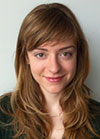
|
NSE’s Leslie Dewan is one of TIME magazine's 30 under 30 changing the worldLeslie Dewan’s planned Waste-Annihilating Molten-Salt Reactor could have a major impact on the energy sector. The innovative design, which she developed with NSE's Mark Massie, mixes nuclear material with molten salt to contain reactions and reduce both waste and the risk of a meltdown. ...more |
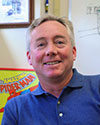
|
NSE’s Dennis Whyte wins Nuclear Fusion Journal AwardThe International Atomic Energy Agency (IAEA) has awarded its 2013 Nuclear Fusion Journal Prize to an article about Professor Dennis Whyte”s fusion research at MIT’s Plasma Science and Fusion Center — “I-mode: an H-mode energy confinement regime with L-mode particle transport in Alcator C-Mod.” Hailed by the publishers as “groundbreaking,” Whyte”s 2010 paper describes an improved energy confinement regime for magnetic fusion devices, I-mode, as studied on Alcator C-Mod, a compact, high-field divertor tokamak. ...more |
